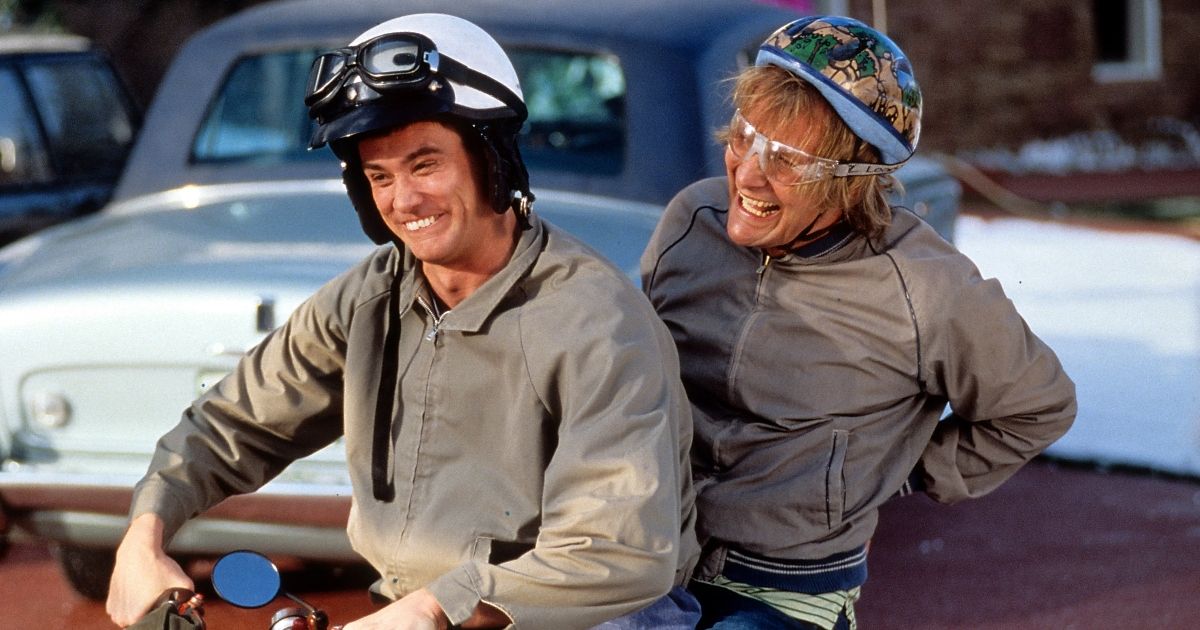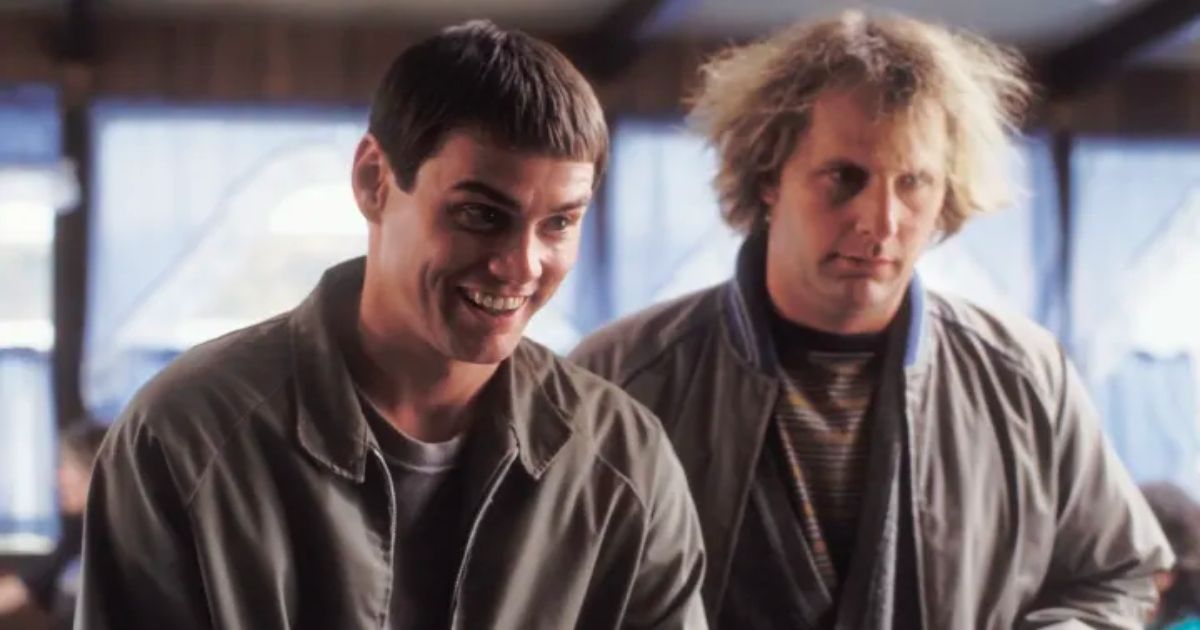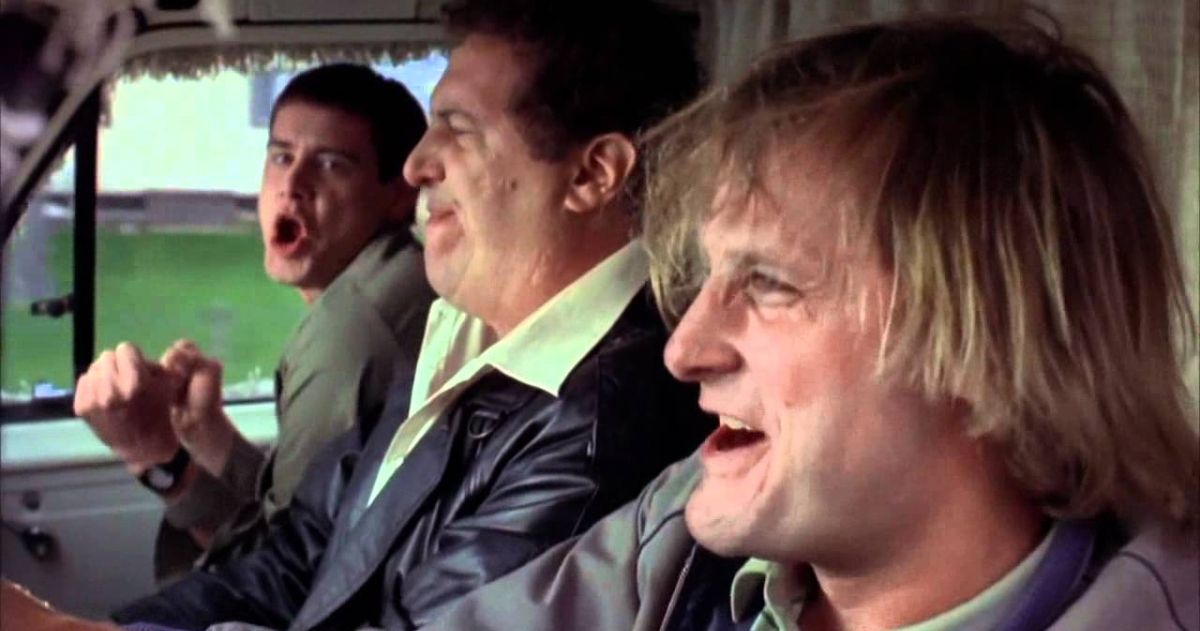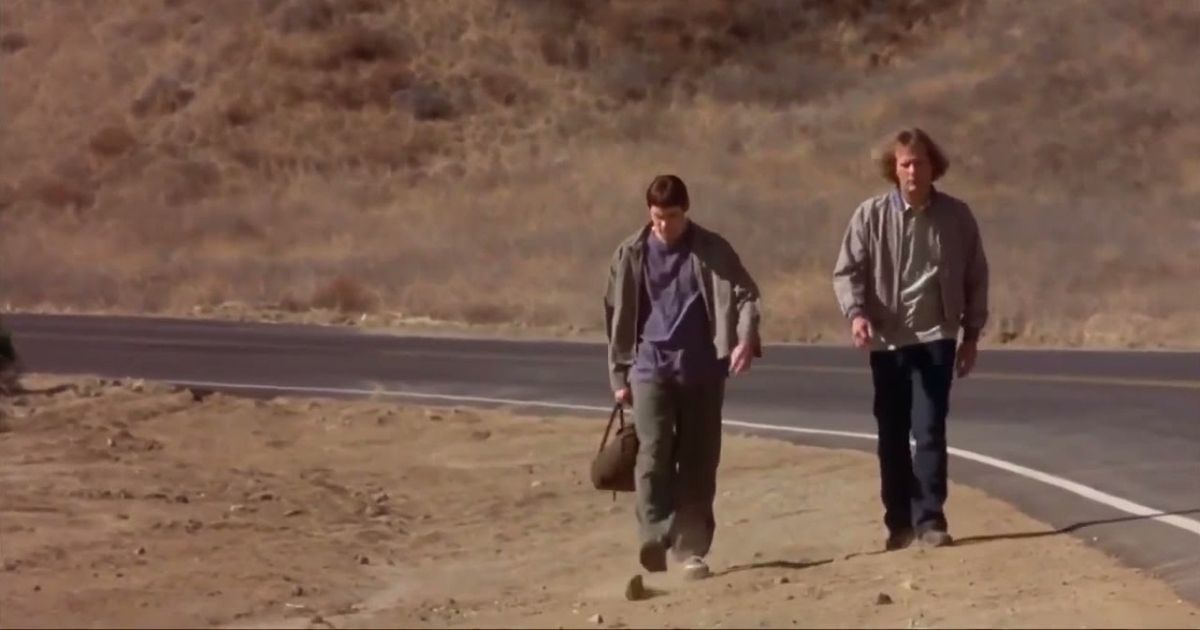Across the history of filmmaking, there is arguably no trope more lasting than the road trip. Set on a singular path with a singular destination, a road trip is an incredibly solid basis for any movie, especially a comedy. Directed by Peter and Bobby Farrelly, Dumb and Dumber takes the road trip movie to its peak, building off the talents of Jeff Daniels as Harry Dunn and Jim Carrey as Lloyd Christmas. With solid motivations, plenty of comedic setpieces, and characters with surprising endpoints, Dumb and Dumber has everything it needs to be a perfect road trip movie.
On the Road
Road trip movies often motivate the trip-goers with either a delivery of an item, or the promise of the destination, or even the threat of danger; Dumb and Dumber surprises and does all three, and offers a goal for each of its main duo. Lloyd starts off the movie as a limo driver, who drives Mary Swanson (Lauren Holly) to the airport, and becomes infatuated with her. When Mary leaves a suitcase at the airport for a pair of intimidating mobsters, Lloyd slides in and intercepts it, believing Mary left it behind on accident. Lloyd convinces Harry, recently-fired from his job as a dog driver, to take the trip to Aspen, Colorado, to deliver the briefcase back to Mary. Having both Harry and Lloyd lose their jobs in the opening leads them to accept the promise of a fun, more social life in Aspen. Lloyd, more specifically, wants to be with Mary. But the final push towards Colorado is the arrival of the two mobsters at Harry and Lloyd’s door. As one brandishes a gun, Lloyd and Harry are convinced it’s because they forgot to pay the gas bill. Regardless of whether the reasoning is the same, the danger is real, and another outside motivator for the road trip.
Highway Hijinx
The set-up on a road trip movie can be important, but what actually happens while on the road makes or breaks the experience. While the road trip does not take up the entire runtime of the film, there is a full film’s worth of set pieces and character beats. Even as they just get on the road, Lloyd pumps his arms to simulate the speed of travel, before admitting he sold Harry’s dead bird to a blind child. It sets a tone of both immaturity and mischief that the Farrelly Brothers were once famous for. Other quintessential stops include a diner, a truck stop, and the requisite run-in with the law.
Several of the movie’s plotlines are resolved even before the road trip is over, giving extra value to the trip as opposed to the rest of the movie. One of the mobsters, played by Goodfellas actor Mike Starr, catches up with Harry and Lloyd by posing as a driver stuck on the side of the road. At a burger stand, the mobster plans to kill them both with rat poison, but Harry and Lloyd prank him instead with spicy peppers. When the mobster reaches for his ulcer medication, Harry and Lloyd instead feed him the rat poison by mistake. The mobster dies, and Harry and Lloyd continue on, taking out the presumed antagonist from the film.
A standout scene near the end of the trip establishes the entire drive to Colorado as a full story within the film’s runtime. As Lloyd dreams of a life in Aspen with Mary, he misses a turn, landing the van without gas in the middle of nowhere. Here, Harry and Lloyd have a falling out, where Harry vows to walk home, alone. In any other movie, it would signify the lowest point near the end of the film, but this only acts as a conclusion to the road trip itself. Lloyd catches up to Harry on a miniature motorized scooter, which he traded the van for “straight up”. Harry declares that Lloyd has completely redeemed himself, and the two ride together towards Aspen. It completely revolves around the conflict between the two, attaching them at the hip (literally) until they arrive in Colorado.
There and Back Again
The thing that sets Dumb and Dumber apart from almost every other road trip movie in existence is the lead characters. Arguably, Harry and Lloyd do not change during the entire runtime of the movie, not even after they complete their journey. When they arrive in Aspen, an entire other type of genre comedy opens up when the pair open the briefcase and discover millions of dollars. In fact, the actual road trip only takes up about 30 minutes or so of the movie, comfortably a third of the runtime. When Harry and Lloyd inadvertently help rescue Mary’s kidnapped husband, they begin their path home, literally walking down the highway. They begin exactly where they started, wearing the exact same clothes they wore at the start of the trip, this time even without a van. But Harry and Lloyd don’t care, and start a game of tag as they walk into the sunset.
The static nature of Harry and Lloyd brings out the best in Dumb and Dumber. The characters can go through intense, life-changing events and still not change themselves. It leads back to the more important aspects the movie highlights, specifically the events and set-ups leading Harry and Lloyd onto the next location.
While it won’t be the last road trip in a movie, Dumb and Dumber will always serve as a perfect example of what a road trip movie can be. Featuring sound motivations, a full arc on the road, and characters unaffected by it, the Farrelly Bros movie isn’t as dumb as its title suggests.




